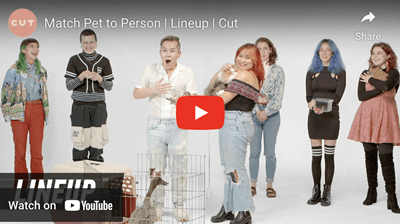Cat pupils are one of the most fascinating aspects of our feline friends. They come in a variety of shapes and sizes, and can tell us a lot about a cat's mood and health. Understanding what different cat pupils mean can help pet owners better care for their furry companions. In this article, we will explore the various meanings behind cat pupils, as well as discuss some interesting trends and common concerns related to this topic.
First and foremost, it's important to understand the basic anatomy of a cat's eye. Cats have vertical slit pupils, which can dilate and contract in response to different lighting conditions. When a cat is in bright light, their pupils will constrict to tiny slits to protect their sensitive retinas. On the other hand, in low light situations, their pupils will dilate to allow more light in. This ability to adjust the size of their pupils is what makes cats such effective hunters, as it allows them to see clearly in a variety of lighting conditions.
One interesting trend related to cat pupils is the phenomenon of “love eyes.” This term refers to when a cat's pupils dilate and become large and round when they are feeling affectionate towards their owner. This can often be seen when a cat is being petted or cuddled, as they are experiencing feelings of contentment and happiness. One professional in the field explains, “When a cat's pupils dilate in your presence, it's a sign that they trust you and feel comfortable around you. It's their way of showing affection and appreciation for the care you provide.”
Another trend to note is the correlation between a cat's pupils and their mood. When a cat is feeling playful and energized, their pupils will often dilate to take in more information and prepare for movement. Conversely, when a cat is feeling scared or threatened, their pupils will constrict to focus on the potential threat and prepare for fight or flight. This connection between a cat's pupils and their emotions is a fascinating aspect of feline behavior that pet owners should be aware of.
One professional in the field explains, “It's important for pet owners to pay attention to their cat's pupils, as they can provide valuable insight into their emotional state. Dilated pupils can indicate excitement or fear, while constricted pupils may suggest stress or discomfort. By observing your cat's pupils, you can better understand their needs and provide appropriate care.”
There are also certain medical conditions that can affect a cat's pupils. For example, cataracts can cause a clouding of the lens in a cat's eye, which can lead to changes in pupil size and shape. Similarly, glaucoma can cause increased pressure within the eye, resulting in dilated or uneven pupils. If a pet owner notices any changes in their cat's pupils, it's important to seek veterinary care to rule out any underlying health issues.
One common concern among pet owners is whether their cat's pupils should be the same size. In most cases, a cat's pupils should be symmetrical, meaning they should be the same size in both eyes. However, if a cat has one pupil that is significantly larger or smaller than the other, it could be a sign of a serious medical condition such as a retinal detachment or neurological disorder. If a pet owner notices any asymmetry in their cat's pupils, they should seek immediate veterinary attention.
Another common concern is whether a cat's pupils should always be round. While most cats have round pupils, some breeds such as Siamese cats have almond-shaped pupils. This is a normal variation in feline anatomy and is not cause for concern. However, if a cat's pupils suddenly change shape or become irregular, it could be a sign of an underlying health issue and should be evaluated by a veterinarian.
One professional in the field explains, “While almond-shaped pupils are common in certain breeds of cats, sudden changes in pupil shape can be a cause for concern. It's important for pet owners to monitor their cat's pupils and seek veterinary care if they notice any abnormalities.”
It's also important for pet owners to be aware of the effects of certain medications on a cat's pupils. Some drugs, such as antihistamines and sedatives, can cause a cat's pupils to dilate or constrict. If a pet owner is concerned about their cat's pupils after administering medication, they should consult their veterinarian for guidance.
One professional in the field advises, “Before giving your cat any medication, it's important to be aware of the potential side effects, including changes in pupil size. If you notice any unusual reactions in your cat, it's best to contact your veterinarian for advice.”
In conclusion, cat pupils are a fascinating aspect of feline anatomy that can provide valuable insight into a cat's mood, health, and emotions. By understanding what different cat pupils mean, pet owners can better care for their furry companions and ensure their well-being. From “love eyes” to medical conditions, there are many trends and concerns related to cat pupils that pet owners should be aware of. By observing their cat's pupils and seeking veterinary care when needed, pet owners can ensure their feline friends lead happy and healthy lives.
![[Vet Explains Pets]](https://vetexplainspets.com/wp-content/uploads/2024/09/cropped-vetlogo-199x66.png)
